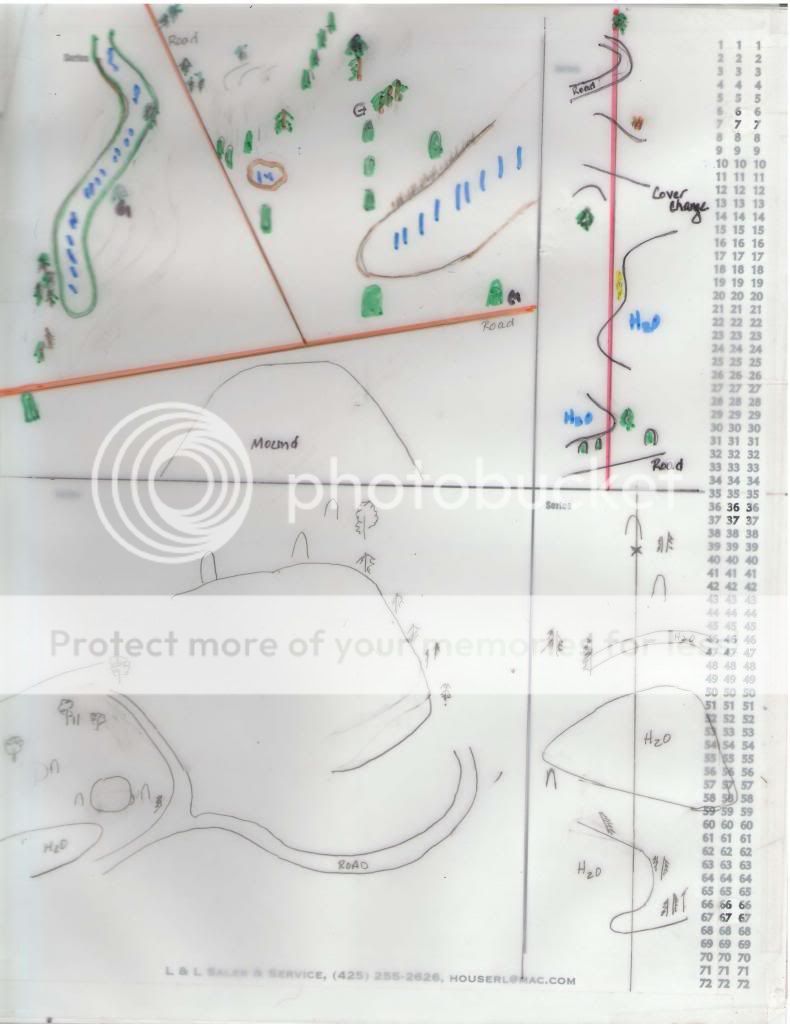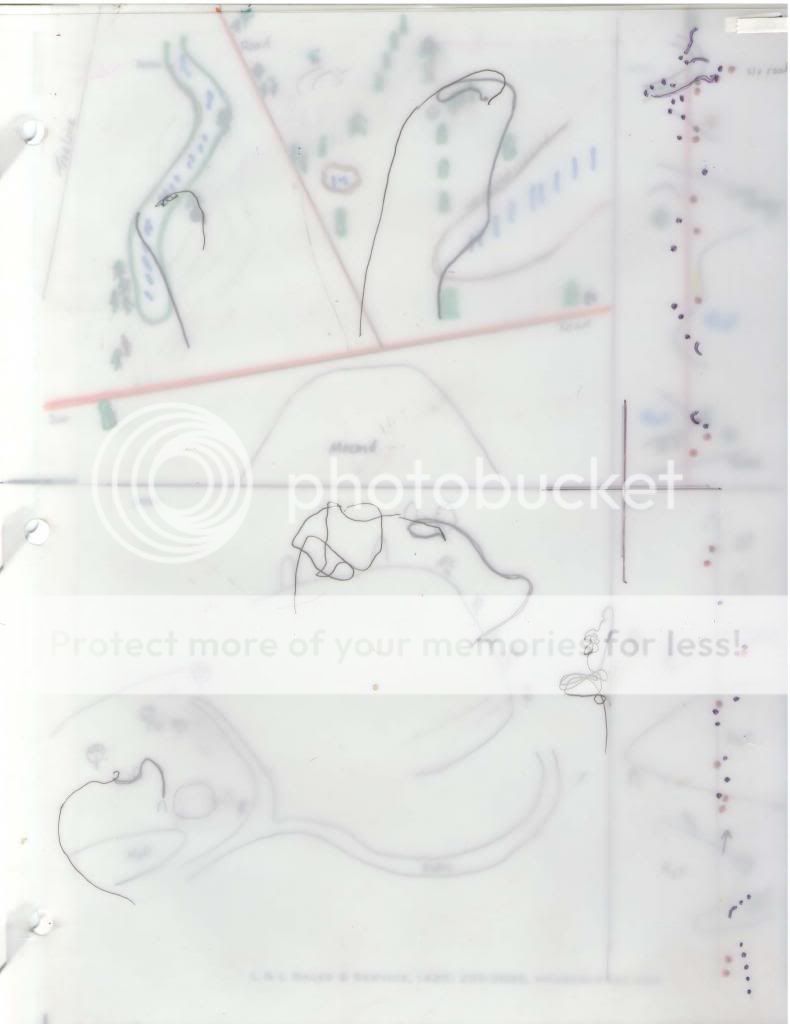I am not ready for the IPAD in judging.
I use a Lee Houser template and transparencies. First, you draw your tests on the template. Here is an example from a previous judging assignment.
![Image]()
Then, you place a transparency for each dog over the template and then diagram the dog's work. Lines on marking tests represent dog's path. Dots on blinds represent where handler blew whistle (no I do not diagram casts, cast refusals, etc.)
![Image]()
With this system, you can compare Dog 1 to Dog 2, simply by placing both sheets over the template.
![Image]()
Hard to imagine doing this with an IPAD.
I use a Lee Houser template and transparencies. First, you draw your tests on the template. Here is an example from a previous judging assignment.

Then, you place a transparency for each dog over the template and then diagram the dog's work. Lines on marking tests represent dog's path. Dots on blinds represent where handler blew whistle (no I do not diagram casts, cast refusals, etc.)

With this system, you can compare Dog 1 to Dog 2, simply by placing both sheets over the template.

Hard to imagine doing this with an IPAD.








